This article was co-authored by Luba Lee, FNP-BC, MS. Luba Lee, FNP-BC is a Board-Certified Family Nurse Practitioner (FNP) and educator in Tennessee with over a decade of clinical experience. Luba has certifications in Pediatric Advanced Life Support (PALS), Emergency Medicine, Advanced Cardiac Life Support (ACLS), Team Building, and Critical Care Nursing. She received her Master of Science in Nursing (MSN) from the University of Tennessee in 2006.
There are 14 references cited in this article, which can be found at the bottom of the page.
This article has been viewed 40,804 times.
Forearm pain can be really frustrating to deal with because of how often you need to use your arms. Usually, tendonitis is the culprit. Fortunately, most of the things that can cause forearm pain can heal on their own, but there are definitely things you can do to help relieve your pain. To help you out, we’ve answered some of the most common questions that people have about dealing with forearm pain.
Steps
What does it mean when you have pain in your forearm?
-
1The most likely cause of your forearm pain is tendonitis. Tendons are cords of tissue that connect your muscles to your bones, and if they get inflamed, it can be really painful. If your forearm is hurting you, it could be because your tendons are inflamed. The location of the pain can help you determine what form of tendonitis you have.[1]
- Lateral epicondylitis, a.k.a. tennis elbow, causes pain in the backside of your elbow and forearm. It’s usually caused by damage to the tendons that bend your wrist back and away from your palm.
- Medial epicondylitis, often called golfer’s or baseball elbow, causes pain from your elbow to your wrist on the palm side of your forearm. The pain is caused by damage to the tendons that bend your wrist toward your palm.
- You may also have pain over the front part of your arm from your wrist to your elbow due to repetitive activities, such as gardening or typing on a computer.
- You can also have tendonitis in the tendons that connect to your bicep and triceps, which is why you may be feeling pain when you exercise or lift weights.
-
2Your pain could be caused by tenosynovitis. This is a condition caused by inflammation of the lining around your tendons. Usually, if you have tenosynovitis, you also have tendonitis at the same time. The best way to tell whether or not your pain is caused by tenosynovitis is by identifying the location of your pain.[2]
- For instance, DeQuervain's tenosynovitis causes swelling in the lining of the tendons of your thumb.
- Trigger finger, also known as trigger thumb, is a type of tenosynovitis that makes it hard for you to extend or flex a finger or thumb.
What are the symptoms of radial tunnel syndrome?
-
1You can have pain at the top of your forearm and outside of your elbow. People with radial tunnel syndrome sometimes describe the dull, aching pain it causes as “cutting, piercing, or stabbing.” The condition can also cause you to feel pain down to the back of your hand as well. Usually, the pain occurs whenever you straighten your wrist or fingers.[5]
- Radial tunnel syndrome is caused by the radial nerve that runs the length of your arm being pinched somewhere. The tunnel at your elbow is one of the most common places for the nerve to be pinched.
-
2You can also have weakness in your forearm muscles and wrist. Radial tunnel syndrome doesn’t affect your nerves, so you won’t feel any tingling or numbness. However, the muscles of your forearm can feel really fatigued. Your wrist can also feel unusually weak and tired.[6]
How do I get rid of pain in my forearm?
-
1Rest your forearm and avoid activities that cause pain. Think of the acronym RICE, which stands for Rest, Ice, Compression, and Elevation. Avoid activities that strain your forearms and apply ice or a cold pack for 20 minutes at a time 3-4 times a day to numb the area and relieve your pain. You can also wrap your forearm with a compression bandage for swelling, and keep your forearm above the level of your heart when you lie down to reduce swelling.[7]
-
2Take pain relievers to relieve discomfort and help with inflammation. Nonsteroidal anti-inflammatory drugs (NSAIDs) like ibuprofen (Advil, Motrin), naproxen (Aleve), and aspirin can help temporarily ease your pain. They also help reduce inflammation. You can also apply topical creams that contain anti-inflammatory medication to your forearms to help relieve your pain.[8]
- If your pain is really bad, talk to your doctor. They may prescribe stronger pain meds for you.
-
3Try massaging your wrist and forearm to relieve the pain. Slowly apply pressure to your arm and move your hand from your wrist all the way up to your elbow. Rub back and forth, pressing your knuckles or thumbs deeper into your skin to work the tension out of your muscles.[9]
- Apply some massage oil to your forearms so it’s easier to rub your skin.
-
4Get a corticosteroid shot for severe inflammation. If your tendons are inflamed to the point where you can’t use your arms at all and your pain is severe, see your doctor. They’ll examine you to make sure there isn’t a more serious problem, and they may decide to inject a steroid shot directly into your tendon to reduce inflammation.[10]
What are some exercises for forearm pain?
-
1Use wrist flexion and extension to stretch and exercise your forearms. Hold your arm out in front of you and point your fingers down to perform a wrist flexion. Keep your arm extended and raise your hand so your fingers are pointing up to do a wrist extension. Use these movements to gently exercise your forearms, which can help improve mobility and reduce your pain levels.[11]
- Gently pull on the top of your hand during a wrist flexion or on your palm during a wrist extension to add more of a stretch.
-
2Twirl a stick to improve your dynamic range of motion. Grab a 3–5 ft (0.91–1.52 m) long stick or rod such as a shower curtain rod or a broomstick. Hold it in the center with 1 hand and gently make a figure-8 motion as you twirl the stick to exercise your forearm and improve your range of motion, which can help with any forearm pain you’re dealing with.[12]
- If you feel any pain or discomfort, stop the exercise immediately. Gently work your way up to it if it’s too painful.
How do you release tight forearms?
-
1Try stretching your forearms throughout the day. Lift 1 of your arms and hold it in front of you with your palm facing down. Bend your hand down and gently pull it toward your body with your other hand until you feel tension. Hold the stretch for 15-30 seconds and repeat it on your other arm. Then, try the same stretch with your palm facing up and repeat the stretch on both arms.[13]
- Improve blood flow to your hands by making fists and extending both arms in front of you. Rotate your wrists outward, then inward in a circular motion for a gentle stretch.
- Always keep your stretches gentle. If you feel pain, you’re stretching too far.
- Shake your arms out to relieve tension in your wrists and forearms when you’re doing a lot of work with your hands.
-
2Take an Epsom salt bath. Epsom salt helps relieve muscle strains and tightness, so it could help you get some relief. Pour 1½ cups (300 g) of Epsom salt into your bathtub while it’s running so it mixes in thoroughly. Sit and soak in the tub for at least 15 minutes to help with the tension and pain you’re feeling.[14]
- Epsom salt is magnesium sulfate, which naturally helps relax muscles.
- If you don’t want to take a bath, you can instead use oral magnesium supplements every day to help ease your pain.
-
3See a physical therapist for severe cases. A physical therapist will be able to help with pain management and help you strengthen your forearms and improve their range of motion. If your forearm pain and tightness persists and doesn’t improve after a few weeks, make an appointment to see a physical therapist. They may be able to help you.[15]
- You can look online for physical therapists in your area or ask your doctor to refer you to one.
When should I see a doctor for forearm pain?
-
1Talk to your doctor if you have severe pain and swelling. If your tendons are so inflamed and painful that it makes everyday activities difficult and unbearable, see your doctor. They’ll examine you to pinpoint the problem and may prescribe you medication that can help. They may also give you a steroid shot that can reduce the inflammation.[16]
-
2Seek medical attention if you can’t turn your arm or move it normally. If you aren’t able to rotate your hand or your arm isn’t able to move in certain directions, there could be a more serious underlying issue such as a fracture. Go to an emergency room for immediate attention and treatment.[17]
- The sooner you address the issue, the better!
-
3Get to a doctor for a sudden and serious injury to your forearm. If you suffered a traumatic injury or you heard a “snapping” or “popping” sound in your forearm, seek emergency medical treatment. They’ll be able to diagnose you and perform any necessary procedures so you can potentially avoid long-term issues.[18]
Warnings
- Get to an emergency room if you hear or feel a snapping or popping sensation in your forearm.⧼thumbs_response⧽
References
- ↑ https://www.hopkinsmedicine.org/health/conditions-and-diseases/tendonitis
- ↑ https://www.hopkinsmedicine.org/health/conditions-and-diseases/tendonitis
- ↑ https://www.hopkinsmedicine.org/health/conditions-and-diseases/tendonitis
- ↑ https://www.mayoclinic.org/diseases-conditions/golfers-elbow/symptoms-causes/syc-20372868
- ↑ https://my.clevelandclinic.org/health/diseases/15658-radial-tunnel-syndrome
- ↑ https://my.clevelandclinic.org/health/diseases/15658-radial-tunnel-syndrome
- ↑ https://www.mayoclinic.org/diseases-conditions/tendinitis/diagnosis-treatment/drc-20378248
- ↑ https://www.mayoclinic.org/diseases-conditions/tendinitis/diagnosis-treatment/drc-20378248
- ↑ https://carrington.edu/blog/simple-massage-stretching-techniques-to-relive-hand-wrist-tension/
- ↑ https://www.mayoclinic.org/diseases-conditions/tendinitis/diagnosis-treatment/drc-20378248
- ↑ https://youtu.be/ko5Kbb2PTEs?t=93
- ↑ https://youtu.be/ko5Kbb2PTEs?t=363
- ↑ https://www.mayoclinic.org/healthy-lifestyle/adult-health/multimedia/forearm-stretches/vid-20084698
- ↑ https://health.clevelandclinic.org/7-things-you-probably-didnt-know-about-epsom-salt/
- ↑ https://www.choosept.com/symptomsconditionsdetail/physical-therapy-guide-to-wrist-tendinitis
- ↑ https://www.mayoclinic.org/symptoms/arm-pain/basics/when-to-see-doctor/sym-20050870
- ↑ https://www.mayoclinic.org/symptoms/arm-pain/basics/when-to-see-doctor/sym-20050870
- ↑ https://www.mayoclinic.org/symptoms/arm-pain/basics/when-to-see-doctor/sym-20050870
- ↑ https://www.uofmhealth.org/health-library/uh2113
- ↑ https://southorangerehab.com/2019/11/14/return-to-play-after-golfers-elbow/
- ↑ https://my.clevelandclinic.org/health/articles/14534-biceps-tendon-injuries
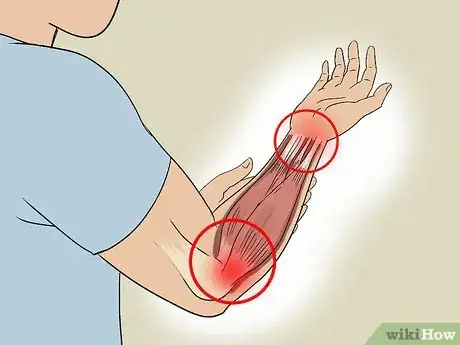
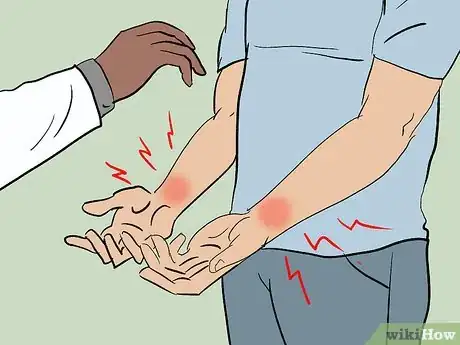
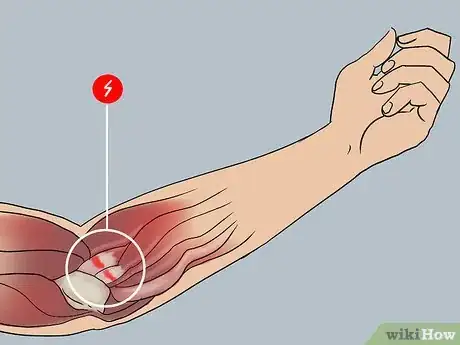
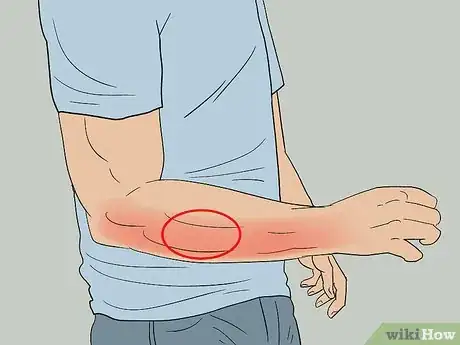


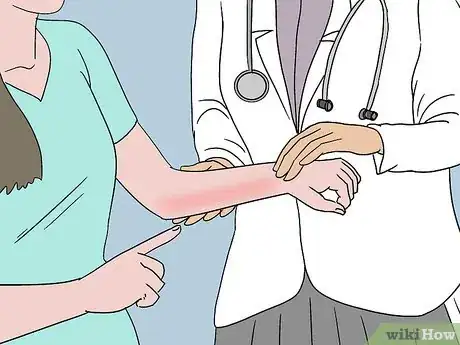

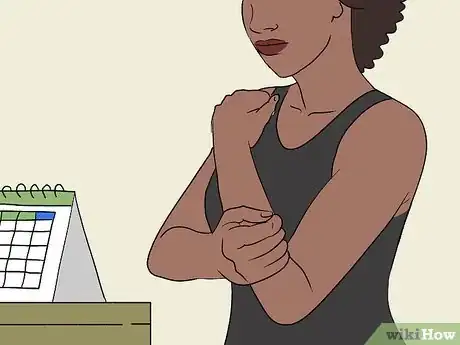





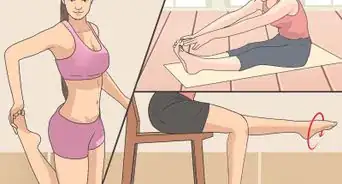
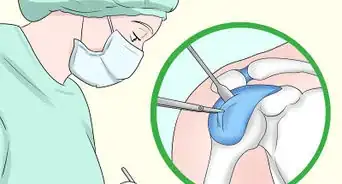
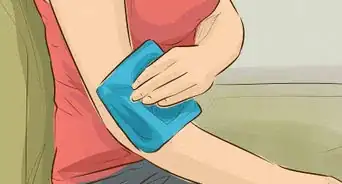
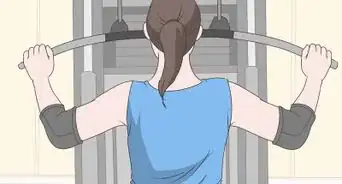







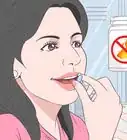
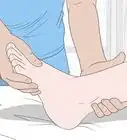





































Medical Disclaimer
The content of this article is not intended to be a substitute for professional medical advice, examination, diagnosis, or treatment. You should always contact your doctor or other qualified healthcare professional before starting, changing, or stopping any kind of health treatment.
Read More...